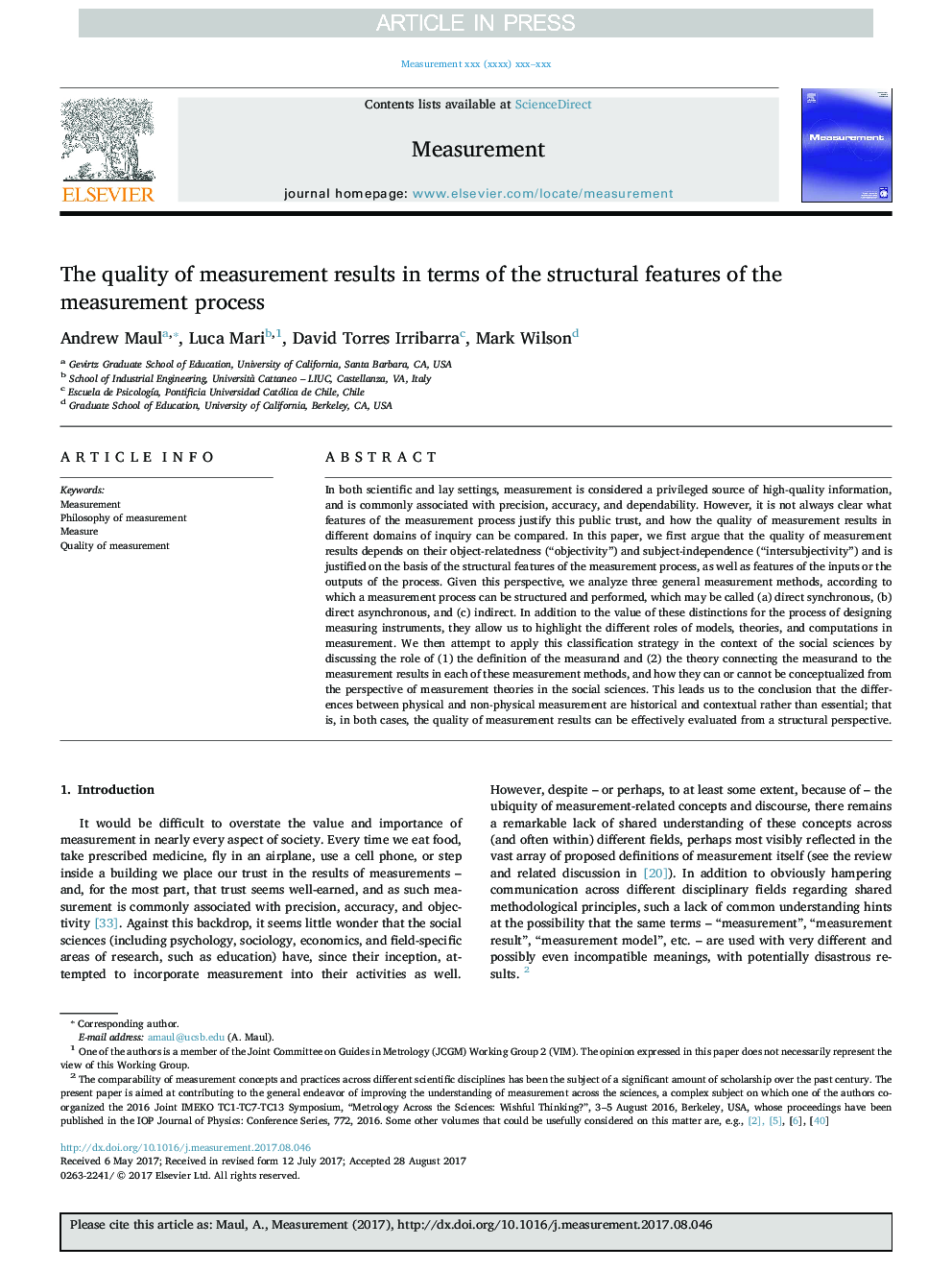| Article ID | Journal | Published Year | Pages | File Type |
|---|---|---|---|---|
| 7122232 | Measurement | 2018 | 10 Pages |
Abstract
In both scientific and lay settings, measurement is considered a privileged source of high-quality information, and is commonly associated with precision, accuracy, and dependability. However, it is not always clear what features of the measurement process justify this public trust, and how the quality of measurement results in different domains of inquiry can be compared. In this paper, we first argue that the quality of measurement results depends on their object-relatedness (“objectivity”) and subject-independence (“intersubjectivity”) and is justified on the basis of the structural features of the measurement process, as well as features of the inputs or the outputs of the process. Given this perspective, we analyze three general measurement methods, according to which a measurement process can be structured and performed, which may be called (a) direct synchronous, (b) direct asynchronous, and (c) indirect. In addition to the value of these distinctions for the process of designing measuring instruments, they allow us to highlight the different roles of models, theories, and computations in measurement. We then attempt to apply this classification strategy in the context of the social sciences by discussing the role of (1) the definition of the measurand and (2) the theory connecting the measurand to the measurement results in each of these measurement methods, and how they can or cannot be conceptualized from the perspective of measurement theories in the social sciences. This leads us to the conclusion that the differences between physical and non-physical measurement are historical and contextual rather than essential; that is, in both cases, the quality of measurement results can be effectively evaluated from a structural perspective.
Related Topics
Physical Sciences and Engineering
Engineering
Control and Systems Engineering
Authors
Andrew Maul, Luca Mari, David Torres Irribarra, Mark Wilson,
